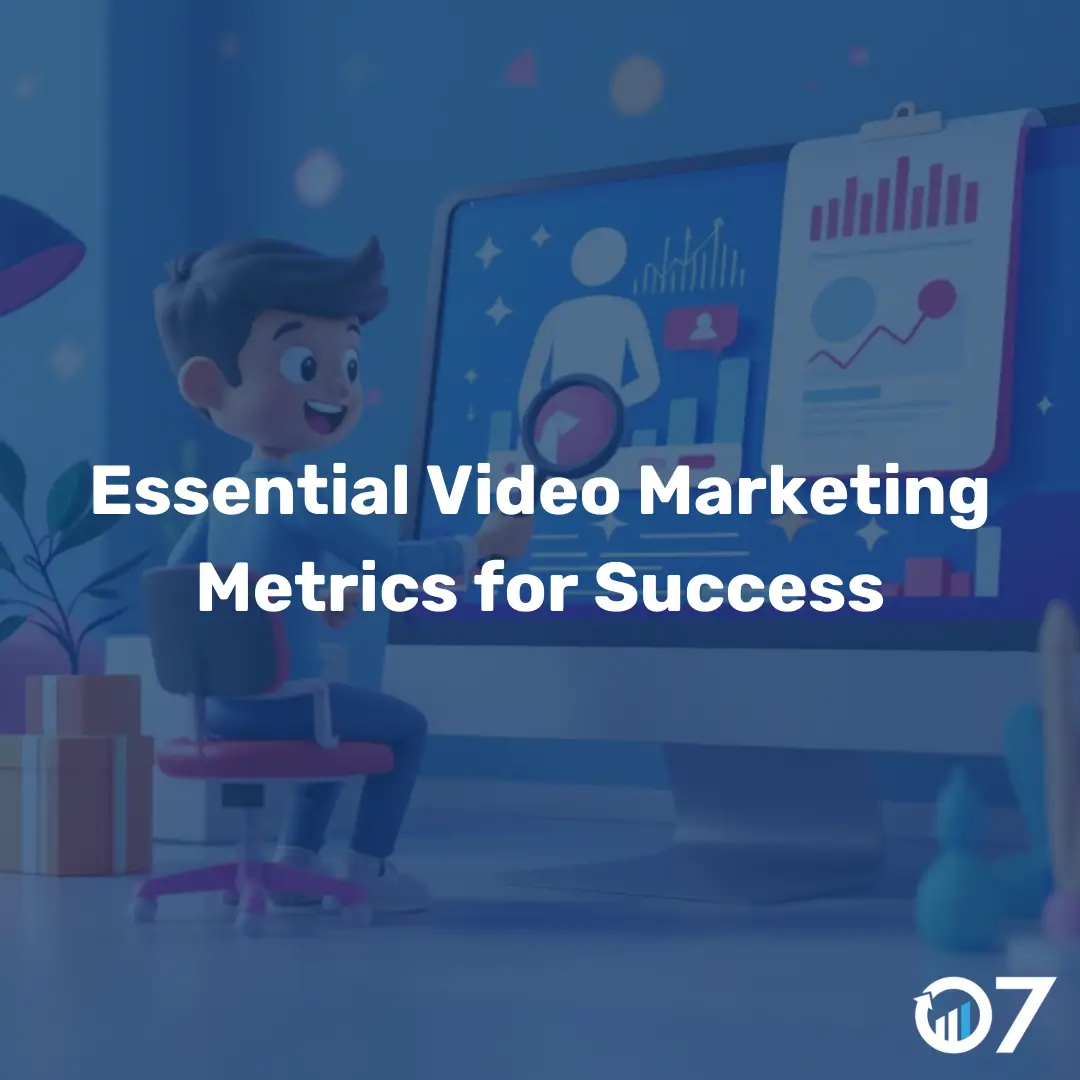Video marketing metrics are crucial for businesses to understand the impact of their video content. By tracking the right metrics, you can make informed decisions to enhance your video marketing strategy.
Conventional wisdom might tell you that video views are a vanity metric, but they’re actually a good indicator of how well your video, especially its hook, performed. However, view count has its drawbacks, like being unable to tell you who your audience is or whether your video resonates with them.
That’s why we’ve created this list of essential video marketing metrics to track. Let’s dive in.
Which Metrics Are Brands Tracking?
According to video marketers, these are the most important video engagement metrics to track in order to measure the performance of video content:
- Engagement (43%)
- Watch time (39%)
- View count (32%)
- Audience retention (27%)
- Follower/subscriber growth (25%)
- Average view duration (22%)
1. Engagement
Engagement (likes, comments, etc.) is the most tracked video marketing metric and the most important video marketing metric to track. It’s one of the most important factors in boosting your video’s organic reach. If a video resonates well with part of your audience, it’ll likely resonate with the rest.
Engagement rate is the most important metric because a high engagement rate indicates that your content is relevant and appealing, which can lead to increased organic reach as viewers are more likely to share and discuss the video.
Engagement also provides marketers with valuable quantitative data. Comments can show you the emotional effect your video has on your viewers. Do they seem inspired? Or are they angry you covered a controversial topic? This data can help you decide which video topics to focus on in the future.
Social shares can paint a clearer picture of your audience’s brand affinity and loyalty. This metric measures how much your audience values your content and brand. It also builds your brand’s credibility. Since people share content that confirms their ideal self-persona, people who share your video are willing to show their community that they trust and support your brand.
Social sharing is also one of the best forms of word-of-mouth marketing.
2. Watch Time
Watch time is the second most important metric, and it clearly explains how much time people actually spend watching your videos. For example, if the average watch time for your 3-minute video is 2 minutes, the average viewer is sitting through nearly all of it, likely because they’re interested in its content.
On the other hand, if the view time averages out at 30 seconds, your video doesn’t successfully draw people in or keep them interested. View time is a top indicator of if your content is boring or not.
3. View Count
It seems logical that your view counts would increase any single time your video is watched on any device, right? That’s usually not the case, and different platforms also have different ways of measuring view counts.
For example, YouTube counts a view as a video being played by one person on one device. If that person refreshes the page, their watch time still counts under that one original view. On TikTok, however, views go up every time a video starts to play.
So, what’s a good benchmark for the amount of views your marketing videos should get? Most marketers say their views average under 10,000 views, while some say their videos average under 1,000 views. Most average under 100,000 views per video.
4. Audience Retention
Audience retention measures how well your video holds the viewer’s attention throughout its duration. High retention rates indicate that your content is engaging and valuable to your audience. This metric helps you understand at which point viewers are dropping off, allowing you to make necessary adjustments to keep them engaged.
By analyzing audience retention, you can identify patterns and trends in viewer behavior. For instance, if you notice a significant drop-off at a particular point in your video, you can investigate why and make changes to improve future content.
5. Follower/Subscriber Growth
Follower/subscriber growth can be an excellent measure of a video’s performance because it shows that your video is reaching new audiences and attracting people to your brand. You can also see what kind of audience your video attracts, which can help you create a buyer persona and create more quality content tailored to your audience.
Growing your follower or subscriber base is a clear indication that your content is resonating with viewers and encouraging them to engage with your brand on a deeper level. This metric also helps you gauge the long-term impact of your video marketing efforts.
6. Average View Duration
Average view duration is the total watch time of your video divided by the total number of video plays, including replays. It measures how long your viewers watch your video, on average. Average view duration is a powerful metric that reveals your audience’s video length preference.
For instance, if your 45-second videos keep getting a 30-second average view duration, you might want to cut those videos down by 15 seconds. This metric helps you understand the optimal video length for keeping your audience engaged and can guide your content creation strategy.
Benchmarks for Video Marketing
Different kinds of videos have different benchmarks. Here are a few video types and the benchmarks we found associated with them:
1. Short-form Videos
Short-form video is the most popular format among survey respondents — 83% use it. It has the highest ROI, generates the most engagement, and drives the most leads. This doesn’t surprise us, considering the rise of short-form video tools and platforms like Instagram Reels and TikTok.
82% of marketers say the optimal length of a short-form marketing video is under 60 seconds. Most say the optimal length is between 21-30 seconds.
2. Long-form Videos
Long-form video is widely considered to be any video longer than three minutes. This format ranks second regarding usage, ROI, lead generation, and engagement. The optimal length for a long-form marketing video is three to six minutes, with some respondents saying it should be longer than 10 minutes.
Regardless of the video format you use, leveraging tools like AI-powered video makers can streamline your process. These tools can help you create engaging content efficiently, ensuring that your videos meet the preferences and expectations of your audience.
Over to You
As video-sharing platforms continue to grow, video marketing will only become more important to your brand’s success. Now that you know the metrics that most marketers — including your competitors — are measuring, you can make sound decisions for your next video marketing campaign.
For more insights and tips on video marketing, visit our blog or contact us via email at info@07hm.co.uk or telephone at 01702 410663.





